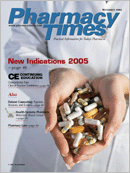Publication
Article
Pharmacy Times
COMPOUNDING HOTLINE
Author(s):
Pharmacists engage in problem solving on a daily basis, consultingwith prescribers about therapeutic alternatives, withpatients about medication administration, side effects, dosing,etc, and with each other about dispensing issues.
Compounding pharmacists are especially familiar with this role,since every compounded prescription is tailored to the specificneeds of a patient, in consultation with the prescriber.
Often, professional judgment is the only source on which to drawwhen solving compounding problems. In such cases, literaturesearches, bioavailability curves, and other hard data with citedreferences are inadequate for the purpose. The pharmacist mustbe willing to synthesize, conclude from his or her background,and confidently assert those conclusions to provide the bestresult for the patient. This month, we provide a brief example ofthe sort of analysis in which the compounding pharmacist mustengage to practice our profession effectively.
Q: We are having difficulty in preparing a solution of phenobarbitalfor use in the neonatal department. The only formsof phenobarbital that we have are tablets and ampules. We getan amount of crystals on the walls of the bottle after 3 days. Weuse acacia as a suspending agent. Can you suggest anything?
A: Whether you use the ampules or the tablets as the sourcefor an active drug, check the excipient list in the prescribinginformation: 1 or more may be interacting with the acacia.You might try to obtain the bulk powder, if such is the case.Rather than using acacia as a suspending agent (unless thetablets contain acacia, which is unlikely), you might try 1%methylcellulose. Or, checking the tablet excipients, you may findsufficient suspending agent (hypromellose, carboxymethylcellulose,or other). In that case, allowing the tablets to disintegrate insyrup may supply sufficient suspending agent.
An additional complication here is the pH/polar sensitivity of acacia.The characteristic color of the acacia may indicate the compositionof the crystalline accumulation.
Mr. Erickson is director of professional affairs at Gallipot Inc.
E-mail your compounding questions tocompounding@pharmacytimes.com







